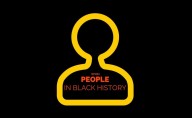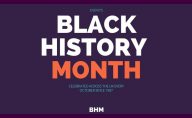About Marcus Mosiah Garvey
NMarcus Garvey, born on Aug. 17, 1887, in St. Ann’s Bay, Jamaica, became a leading pan African activist, and a crucial figure in the struggle for racial equality. He was the youngest of 11 children, attended school in Jamaica until he was 14, and went on to work in a print shop. He became involved in social reform, and took part in the first Printers’ Union strike in Jamaica in 1907. A few years later in 1909 he sets up a small newspaper, called The Watchman, however it closes after its third issue.
He went on to travel and work extensively through Central and South America, looking at the hardships and injustices experienced by Black people. He continued to publish, also short-lived, newspaper in Costa Rica and Panama, during his early Central American travels.In 1912, he moved to London, and worked hard on the docks, contributed to a newspaper called The African and Orient Review, and found time to attend Birkbeck College attending classes in Law and Philosophy.
By 1914, he returned to Jamaica, and founded the Universal Negro Improvement Association (UNIA) advocating worldwide black unity and an end to colonialism. However, by 1916, following limited interest in Jamaica, and friendship with Booker T. Washington, Garvey went to the United States where he started the ‘The Negro World’ newspaper in 1918, and toured across the country preaching Black Nationalism to ever increasing audiences.
Garvey’s popularity almost cost him his life, when in October 1919, he was involved in a gun attack, escaping with a serious head injury. George Tyler a former employee, was arrested and a month later commits suicide in jail. News of the incident spread and Garvey’s popularity soared.
That same year, the UNIA started the Black Star Line a fully black-owned shipping company, with the aim of empowering blacks economically. During that same year the UNIA also started the Negro Factories Corporation, to promote black factories and businesses in the US and around the world.
The peak of Garvey’s career was in 1920, when he presided over the first convention in New York. There were delegates present from 25 countries, and a parade of around 25,000 people out in the streets of Harlem. Before a large crowd Garvey spoke of his plans to build an African nation-state. At this time his ideas became popular, and thousands enrolled in the UNIA, and he quickly developed UNIA branches around the USA and the world. With his promotion of the ‘back to Africa’ movement he also became known as the ‘Black Moses’
Garvey’s popularity and political influence started to decline rapidly, The Black Star Line shipping company was seeing financial difficulties, and in 1922, he with other UNIA members were indicted for mail fraud. He served two years of a five year prison term, in Atlanta Federal Penitentiary, as his sentence was commuted in 1927, and he was deported back to Jamaica.
Back in Jamaica, Garvey turned his energies to politics, campaigning on a platform of self-government, minimum wage laws, and land and judicial reform. He was soundly defeated at the polls, however, because most of his followers did not have the necessary voting qualifications.
In September 1929, Garvey founded the People’s Political Party (PPP), Jamaica’s first modern political party, promoting workers’ rights, education and aid to the poor. Garvey was elected Councillor for the Allman Town division of the Kingston and St. Andrew Corporation (KSAC) in 1929.
In April 1931, Garvey started the Edelweiss Amusement Company, which promoted local artists. Several Jamaican entertainers who went on to become popular locally, received their initial exposure there. These included Kidd Harold, Ernest Cupidon, Ranny Williams and the comedy duo, Bim & Bam.
He was never able to fully revive his political movement, and moved back to London where he spent his final years. During this time he continued to be active, speaking in Hyde Park, and editing ‘the Black Man’ Magazine from Beauchamp St. in Fulham. He died in near obscurity, on June 10, 1940.
At the time of his death, he was interred in the Kensal Green Cemetery, London. In November 1964, the Government of Jamaica had his remains brought to Jamaica and ceremoniously re-interred at a shrine dedicated to him in National Heroes Park, and proclaimed Garvey Jamaica’s first National Hero.
Garvey’s name has been kept alive, schools and colleges, highways and buildings in Africa, Europe, the Caribbean and the United States have been named in his memory. The UNIA’s red, black and green flag is used for the Black Liberation Flag today.
Find out more about people in Jamaican History.
Queen Nanny Bogle Samuel Sharpe George William Gordon Sir Alexander Bustamante Norman Washington Manley



